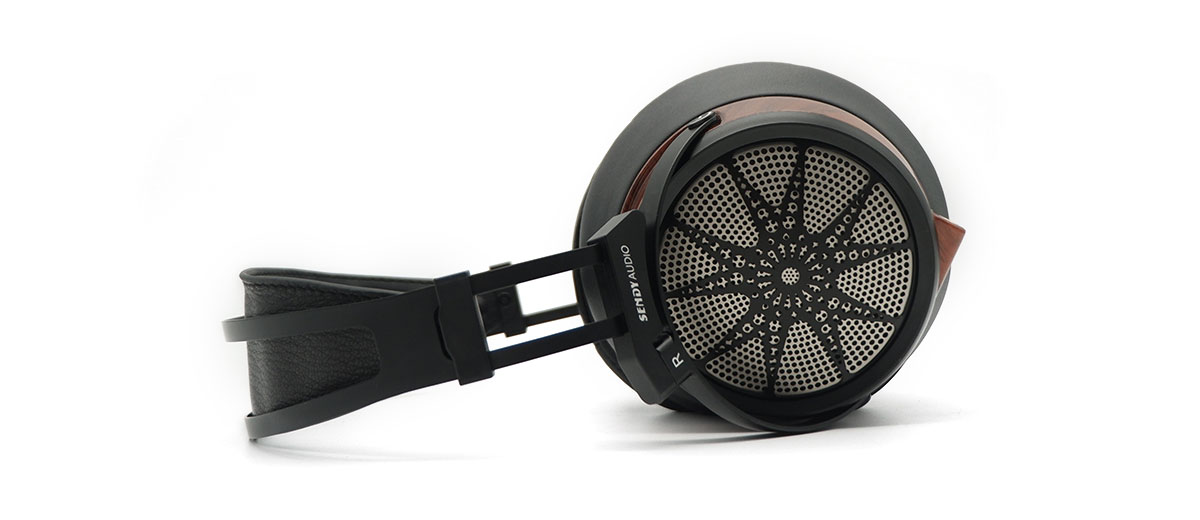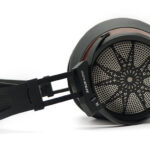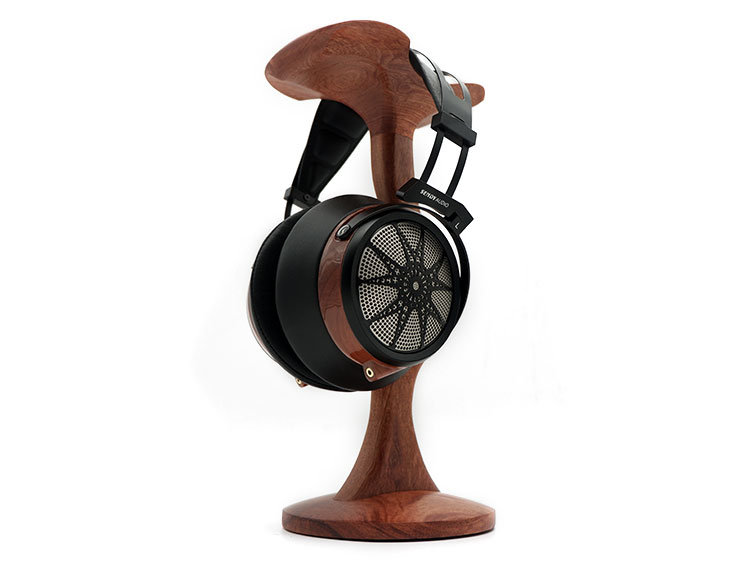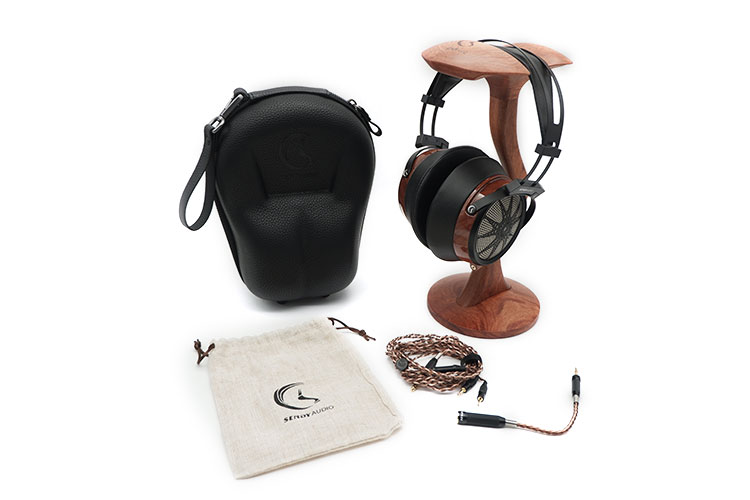Our review of the Sendy Audio Apollo, which is a new open-back full-size woody headphone using a 68mm planar magnetic driver. It is priced at $499.
Disclaimer: This was sent to us as a sample for our honest opinion. Headfonics is an independent website with no affiliate links or services. We thank the team at Sendy Audio for giving us this opportunity.
To read more about Sendy Audio products previously featured on Headfonics click here.
Note, this article follows our latest scoring guidelines which you can read up on here.
Sendy Audio is a sub-brand of Dongguan Sivga Electronic Technology Co., which is aimed at creating higher-end audiophile products.
Although Sendy Audio is relatively new, they have been producing some interesting headphones including the Aiva and their flagship, the Peacock, both of which we have reviewed recently.
This time, Sendy Audio has launched a more affordable planar magnetic driver-based headphone called the Apollo. Priced at $499 it is positioned at what I would term as the competitive side of the mid-fi headphone market.
Tech Highlights
The Apollo is an open-back planar magnetic driver headphone. However, doesn’t use an off-the-shelf planar magnetic driver, instead, it uses Sendy Audio’s quad former technology.
This means that the driver inside the headphone has dual-sided magnets, while the diaphragm itself has 2 coils on each side of the diaphragm, giving it a total of 4 coils. This gives the Apollo a soft and natural vocal presentation, a solid bass response, and treble extension up to 40kHz.
The driver on the Apollo is a 68mm planar magnetic driver with a reasonable SPL rating of 95dB, and an impedance of 16Ω. The frequency range of the Apollo is quite wide, having a 20Hz-40kHz frequency response.
Design
Consistent with the rest of the Sendy Audio product line, the Apollo uses a suspension-style headband made of spring steel.
The strap on the headband is made with foam and soft lambskin. Similarly, the earpads on the Apollo are also made with lambskin, which makes the earpads soft and pliable while being held in place using clips. They can also be easily be replaced by the user when they wear out.
On some suspension strap systems, the strap itself is held together using some elastic to make it more comfortable at the cost of long-term durability. Fortunately, Sendy Audio decided to use a suspension strap system that slides along the headband, allowing for adjustment while giving me confidence that it would last longer than ones that use elastic.
The earcups on the Apollo can also be adjusted both horizontally and vertically. This makes it easy for the user to properly adjust the earcups to conform to any head shape or size. Each earcup has silver mesh grills that are then overlaid with a black sun pattern, a reference to the standard black star of Apollo.
The earcups themselves are made of rosewood, which is then CNC machined, and coated with a high gloss finish to make it durable. Each earcup then has 2.5mm cable connectors that are slanted to the front of the headphone.
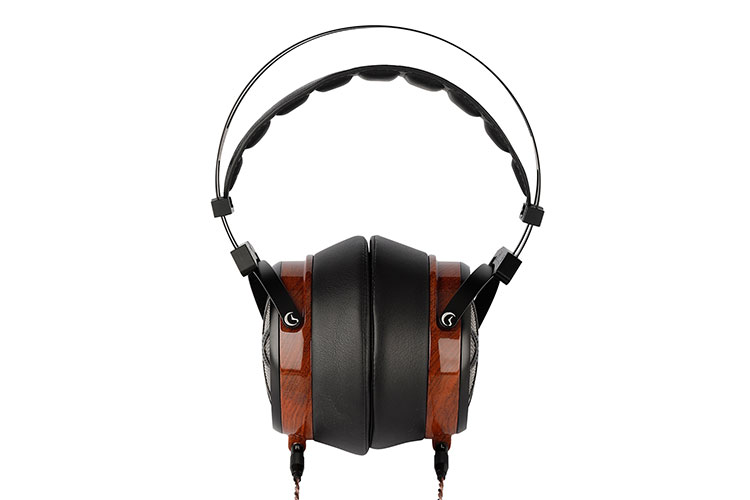
Comfort & Isolation
Having a suspension-type headband with a leather head pad makes the Apollo comfortable on top of my head since the weight is distributed properly. It also helps that the Apollo only weighs 395g, which is relatively light for a pair of planar magnetic headphones, particularly if you consider that the Apollo has a dual-sided magnet design.
Using more lambskin leather on the earpads also helps with the comfort of the Apollo, as this allows the soft foam inside the earpads to conform to the side of my head accurately. The less porous material of the earpads makes them a bit hot though.
Together with the earcup adjustment, the soft earpads ensure that the earcups can be adjusted to make a good seal around my ears. The slanted connectors on each earcup make sure that the cable connectors don’t drape over my shoulders.
Overall, the ergonomic design of the Apollo is well thought out, allowing the user to focus more on the music.
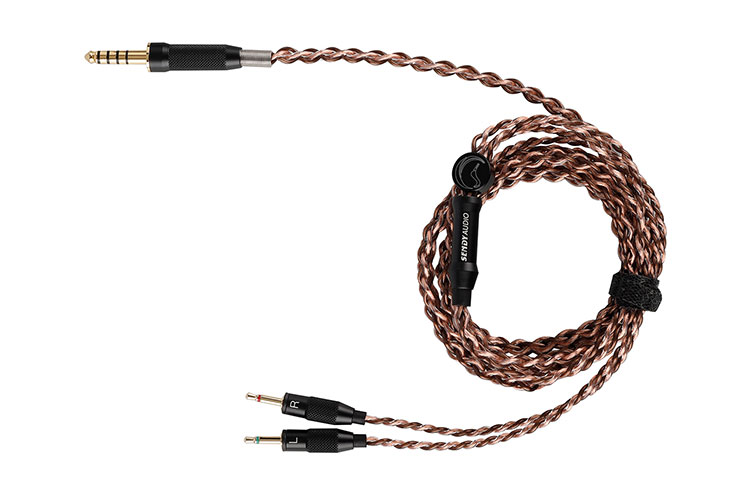
Stock Cable
Sendy Audio includes a 6N OCC copper cable as standard with the Apollo. The cable itself is braided without any outer sheath, which is a good choice since the cables remain soft, and avoid being microphonic even when I move around.
It’s generous of Sendy Audio to send a balanced cable as standard with the Apollo, so the source end of the cable is terminated in a 4.4mm pentaconn connection, while they also included a pentaconn to 3.5mm TRS adaptor.
The headphone side of the cable is a bit more troublesome, as the cable is terminated with a 2.5mm TS connection, which is a bit less common and less durable than a 3.5mm connection.
Both the connectors and the splitter are made with the same material, which is a black painted metal piece. The connectors also have gnarling to allow for a firmer grip for when the connectors are being pulled out.
Packaging & Accessories
The Apollo comes with a carrying case inside a standard brown box filled with foam inserts. This makes the protection inside the box something reusable when you want to bring the headphones on the road.
The carrying case that comes with the Apollo is a black semi-hard shell that perfectly conforms to the headphones and is similar to the one used with the Aiva. This ensures that the headphones won’t move around too much when they’re transported. Also, the carrying case has enough space inside to bring along the cables and even a small DAC or DAP.
Aside from the carrying case, the Apollo arrives with a pair of earpad protectors that are fitted over the earpads. The other accessories include a stock cable terminated in a 4.4mm pentaconn connection, a 4.4mm pentaconn to 3.5mm TRS converter, and a pouch that keeps the cables organized inside the carrying case.
Sound Impressions
Bass
Bass extension on the Apollo is not a problem, as it easily extends linearly into the sub-bass region. This allows the bass to have a diffused quality that serves as the backdrop to the rest of the soundscape.
There isn’t much of a mid-bass hump while the attack and decay behind each drum hit are simply spot on. This makes drum hits sound very natural while staying away from bleeding into the rest of the frequency spectrum.
With the more exacting nature of the Apollo, the bass response on it is generally very controlled, which makes bass guitars sound very taut while being tonally accurate. The appropriate amount of decay and attack also allows the Apollo to recreate the natural flow of bow strokes on classical upright bass.
Mids
The Apollo doesn’t artificially inject any euphony into the vocals, but it doesn’t detract from the euphony that’s already there in the original recording. Male vocals typically have a full-bodied and convincing presentation allowing vocalists like Josh Groban to have a powerful performance.
The Apollo is fairly transparent and satisfactorily resolving for nuanced spatial cues and micro-detail. The texture and airiness in the vocal presentation of singers such as Adele can readily be heard. Similarly, guitars sound singular with each pluck of the string. However, when there is a particularly busy passage, the notes of the guitar start to blur together.
Putting on piano pieces, there is some perceived shallowness in each note. The body of each percussive strike of the piano isn’t as natural as I expected and leads to the notes blurring together at times.
Treble
Although the Apollo has a more measured treble presentation, the execution of the treble is surprisingly natural. With the hit of each cymbal having just enough splash while peeking through with edge and bite when it’s called for.
Wind instruments on the other hand have a good sense of space and body, allowing horns to sound natural and airy. There is also a good sense of space and air due to the more extended and slightly elevated upper treble range. Fortunately, the upper treble uptick doesn’t translate to being sibilant since it stays sweet and smooth throughout.
Staging
The soundstage isn’t particularly wide and doesn’t extend much beyond my head. It doesn’t feel like there is a wall that serves as the boundary to the sound though.
However, I was pleasantly surprised at how accurately each image is placed within the soundstage as each element has a well-defined place within the soundstage. When creating a center image, Apollo can also create a convincing center image.
Layering within the soundstage is also a strong suit for the Apollo, as the images within the soundstage go further into my head giving it a sense of depth and layering. The delineation of the images within the soundstage is also well-executed, as the images don’t overlap too often.
Click on page 2 below for pairings and select comparisons

